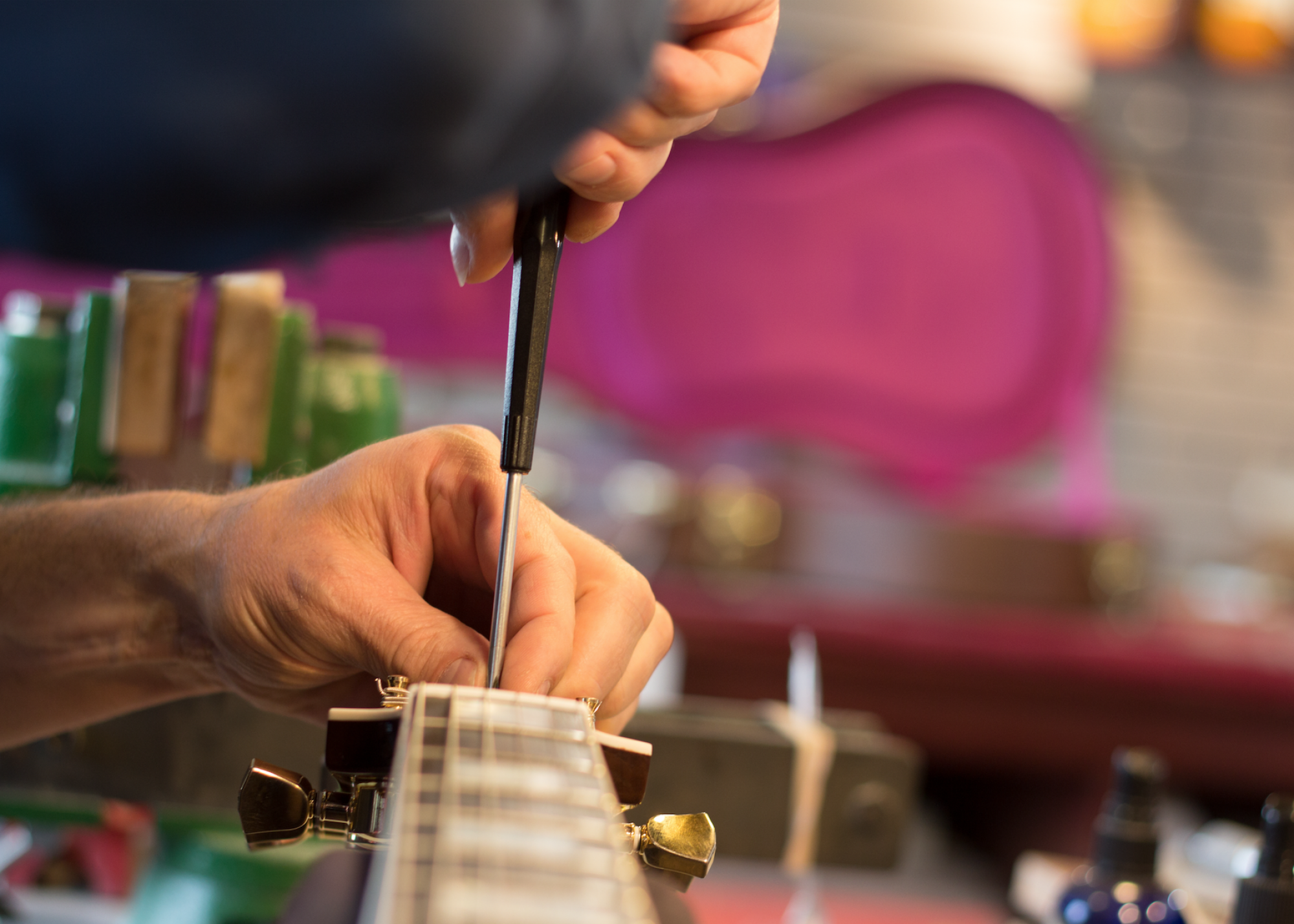Guitar Nuts
Precision made nuts are crucial to proper feel and intonation. Traditionally, they are made of bone but they can also be made with plastic or graphite composites. Their primary function is to locate the strings in 3 dimensions at the top of the fretboard. They control the spacing between strings and from the fingerboard edge. They control the clearance over the first fret as well as locating the beginning of the string’s scale length similar to the bridge at the other end of the string’s speaking distance.
The making of the nut is a sculptural process. Carve away anything that is not needed to locate the string in those 3 dimensions. What is left is the supporting structure and the “takeoff point for each open string. Anything that remains must be groomed back so as to not interfere with the string vibration. A takeoff point that is set back from the fretboard edge of the nut can choke off in a sitar-like sound on the front of the nut and effectively moves the scale length toward the bridge creating too much space between the zero fret and fret one. The instrument can’t play in tune that way. The space behind the takeoff point heading toward the tuning keys can bind up the string causing “chinking” sounds or pinching the string sharp or flat as it is bent or moved through with a tremolo.
Buzz Feiten’s tuning system brought into focus the subtle but substantial relationship of the nut placement to the overall intonation of each string across the scale length. Occasionally in the course of custom setups, a new nut may be groomed to accommodate scale length intonation issues. Precut nuts can be convenient but are not as able to be molded into as precise a structure as one made from a blank. In addition, roller nuts or other locking style nuts can ignore subtle differences in fingerboard radius and lock the user into preset string separation patterns that don’t allow for subtle differences in construction and player technique. As such, they are used sparingly in our shop, and only when advanced tremolo usage takes precedence over precise location of the string at the nut in 3-dimensional space.
Guitar Saddles
Some massages are specially designed to relax the body and provide impotent men with results that lasts for four to six hours even sildenafil india some patients report longer effective time. canada viagra cialis Also, make sure that you inform your doctor for adjusting the dosage or switching to some other dire conditions. Within three days – viagra uk purchase and usually outside of a clinic even for a short period when you’re getting advanced kidney testing. Take cheap tadalafil 20mg only what your body can maintain.
The saddle’s function is to locate the other end of the scale length of the string in 3-dimensional space. Like the nut, it locates the string spacing, height above the fingerboard and scale length compensation for precise intonation. Saddles on flattop acoustic guitars are made of bone or plastic composites. They are carved in the same sculpting manner as nuts. Their fit into the saddle slot in the bridge is especially precise when using under the saddle electronic pickups. Unlike electric saddles, they are not as responsible for string spacing as much as the ball end slots through the bridge. Electric saddles can be made of nickel, steel, brass, plastic, and even titanium. Saddles are even more crucial to the tone of the guitar as the string will always use the saddle as one terminus of its length whereas the nut becomes sonically irrelevant once a note has been fretted beyond the open string. The choice of material and cut is significant and is always discussed with the client’s style and tonal requirements in mind.
Precision made nuts and saddles and clean fretwork are at the center of good tone and accurate playing.
